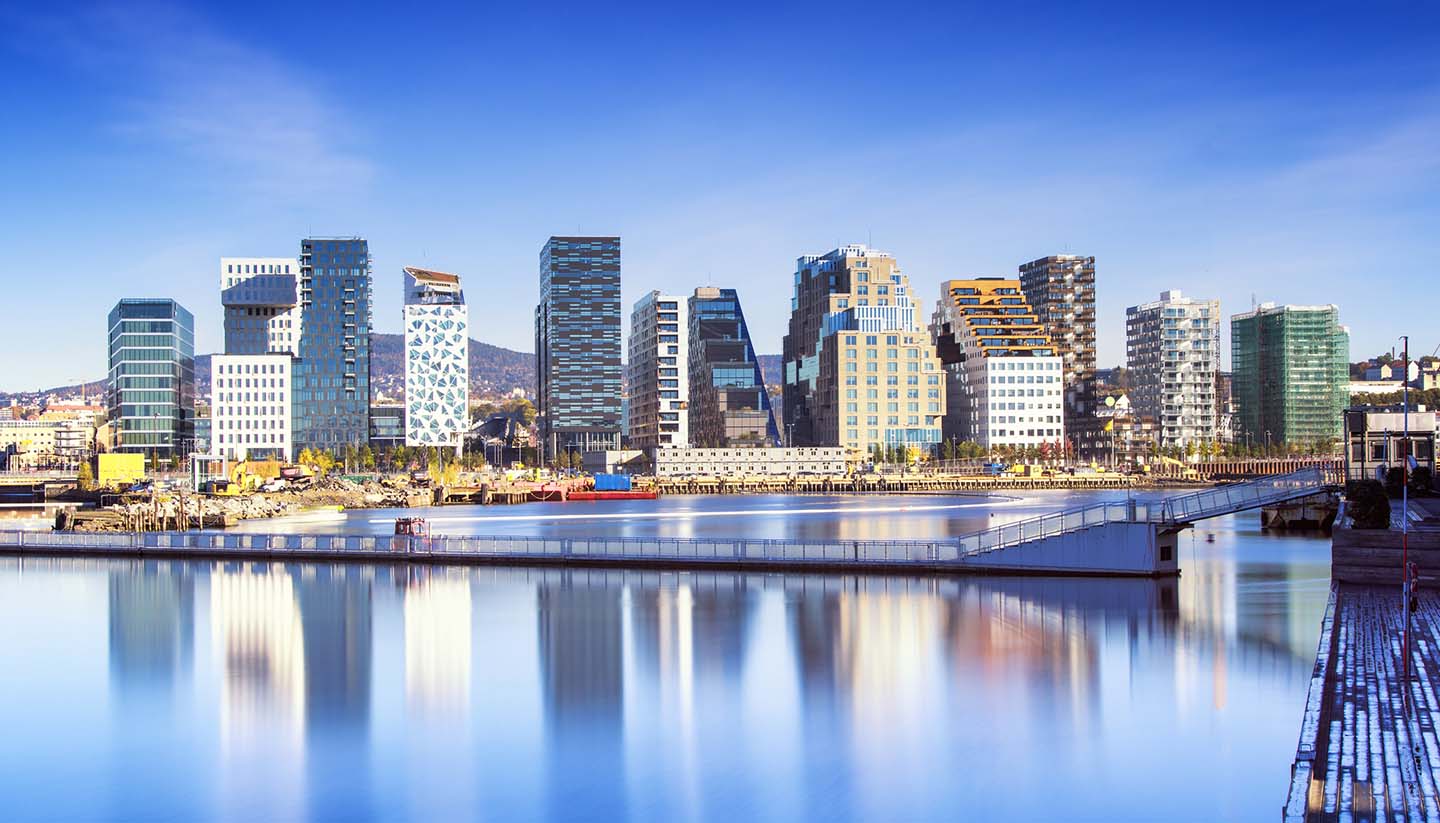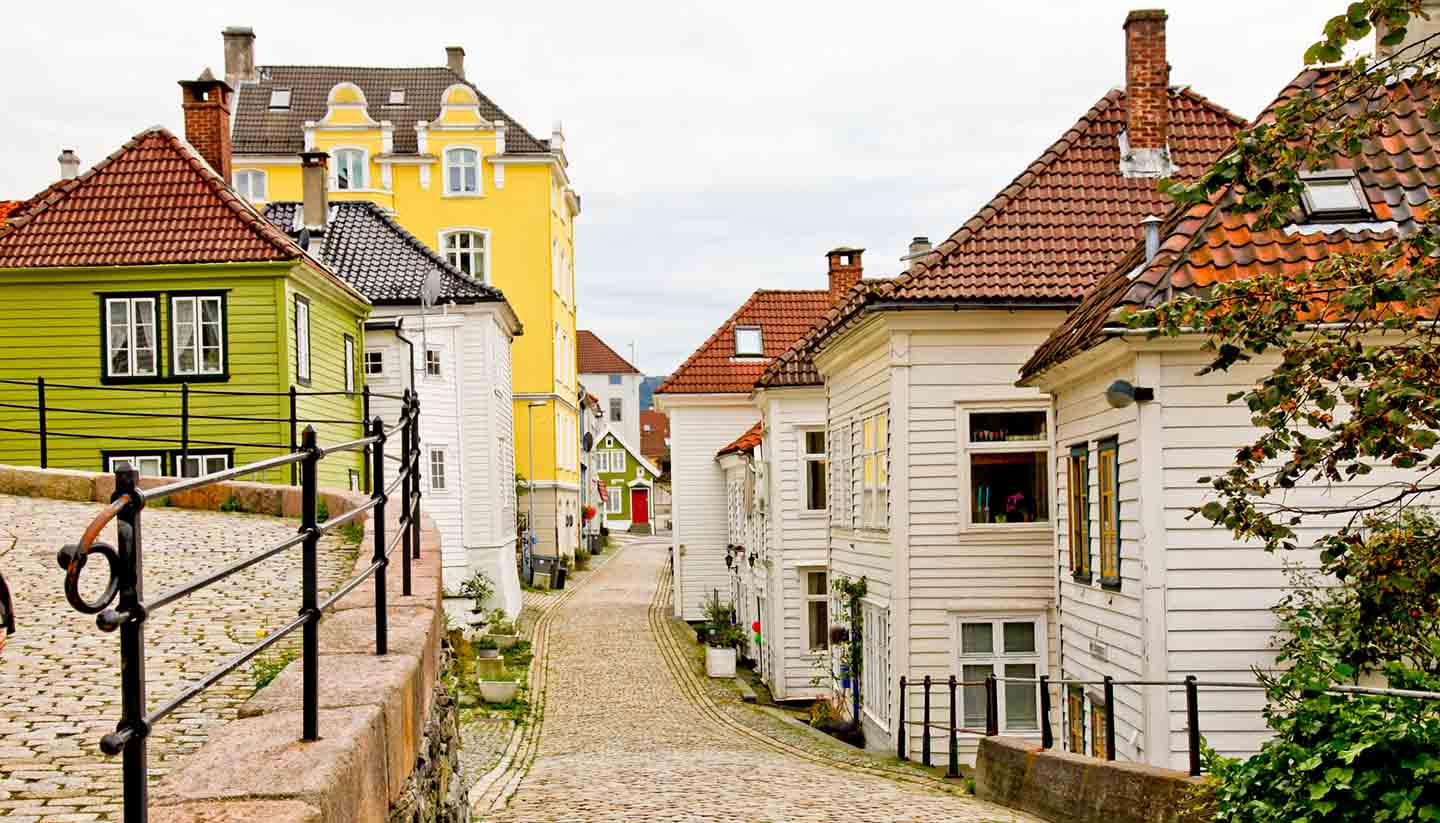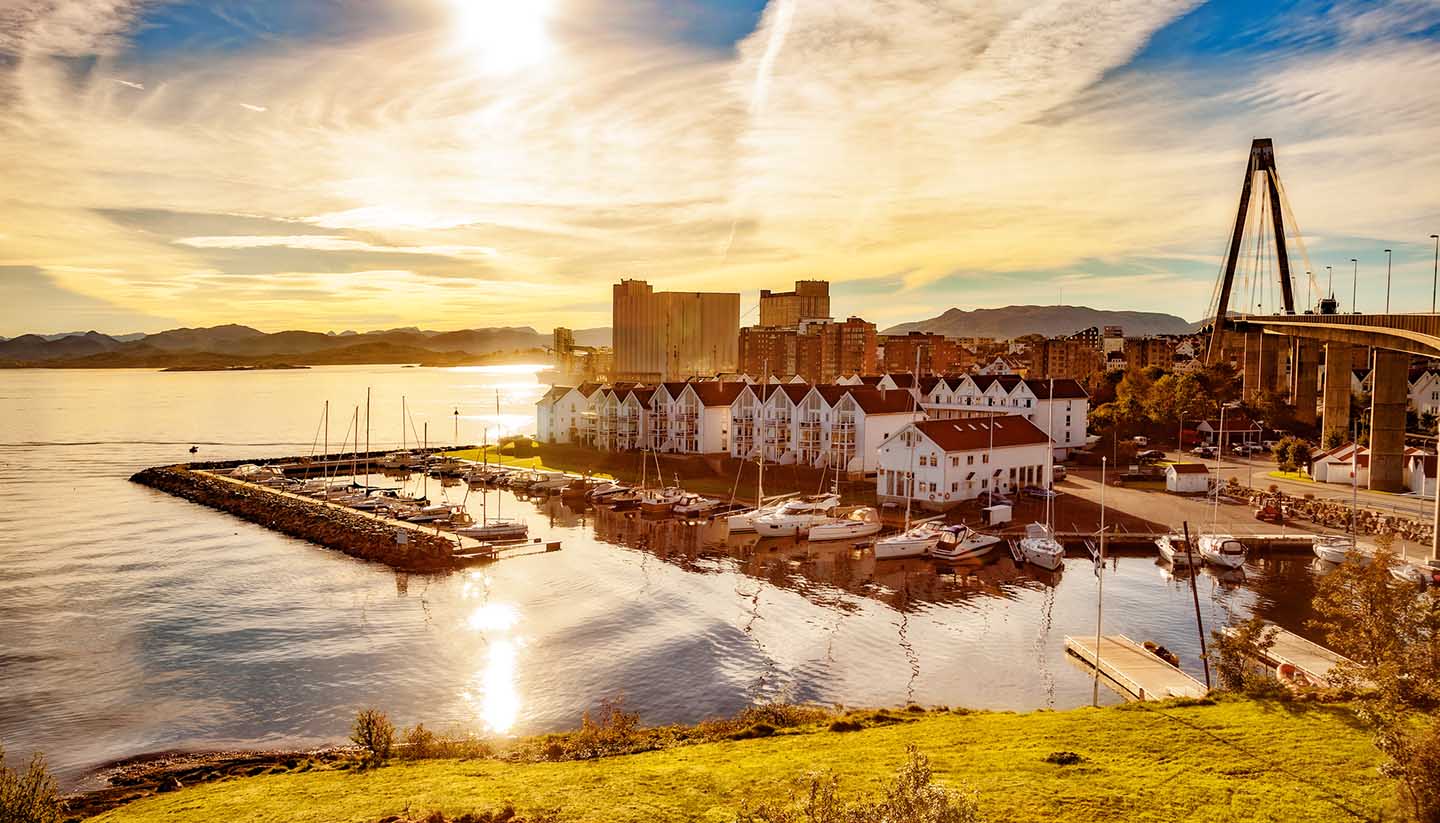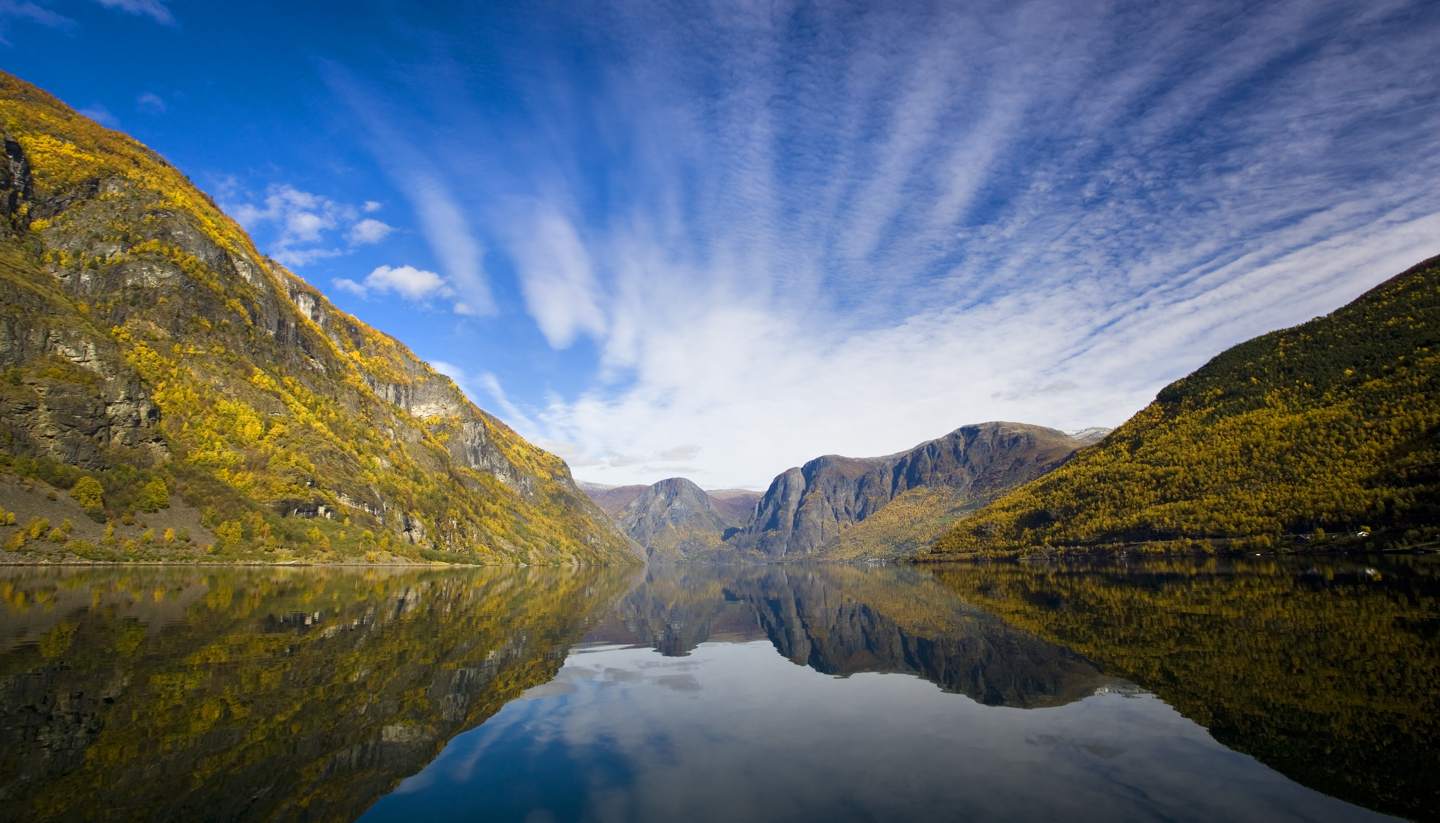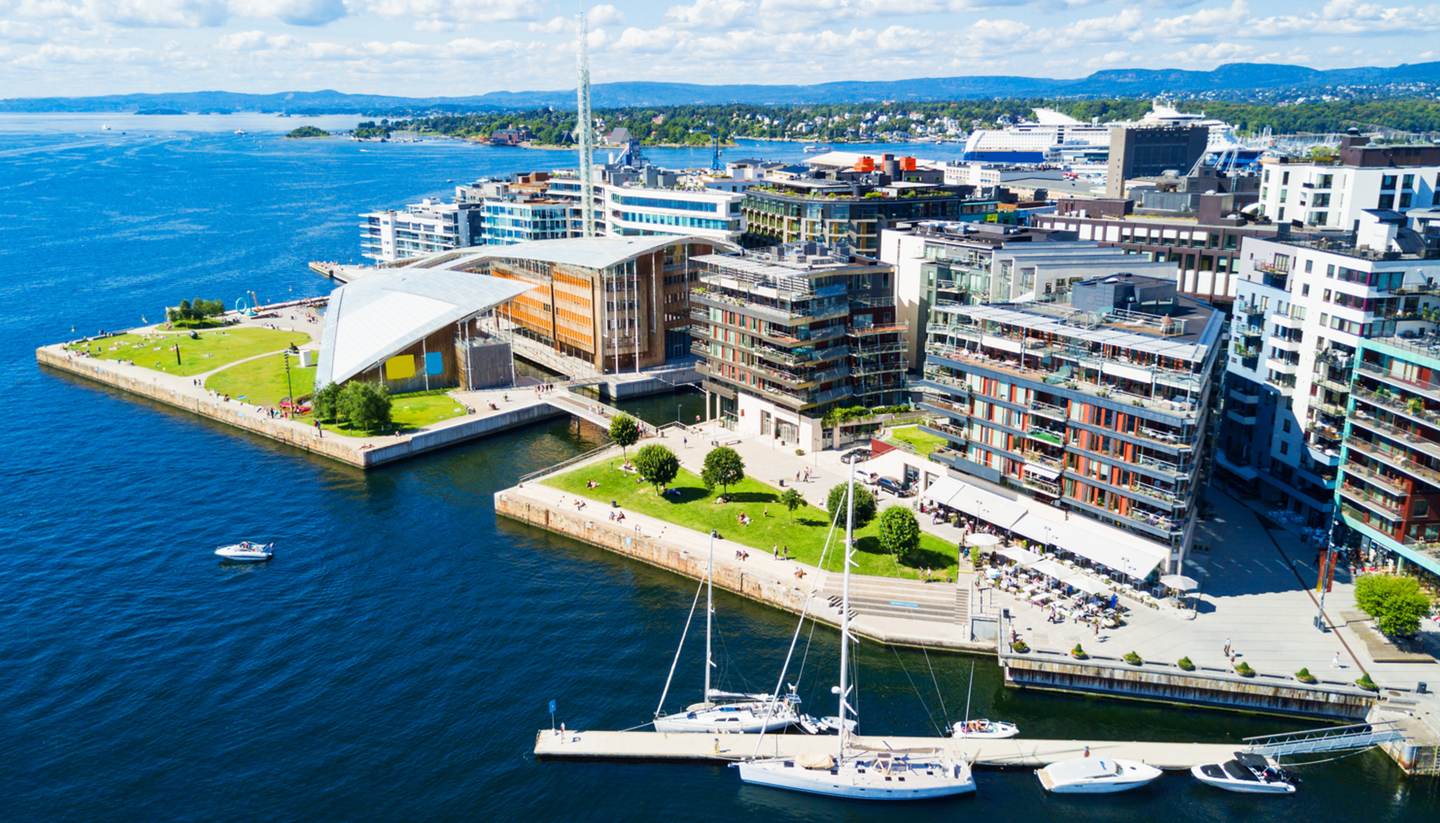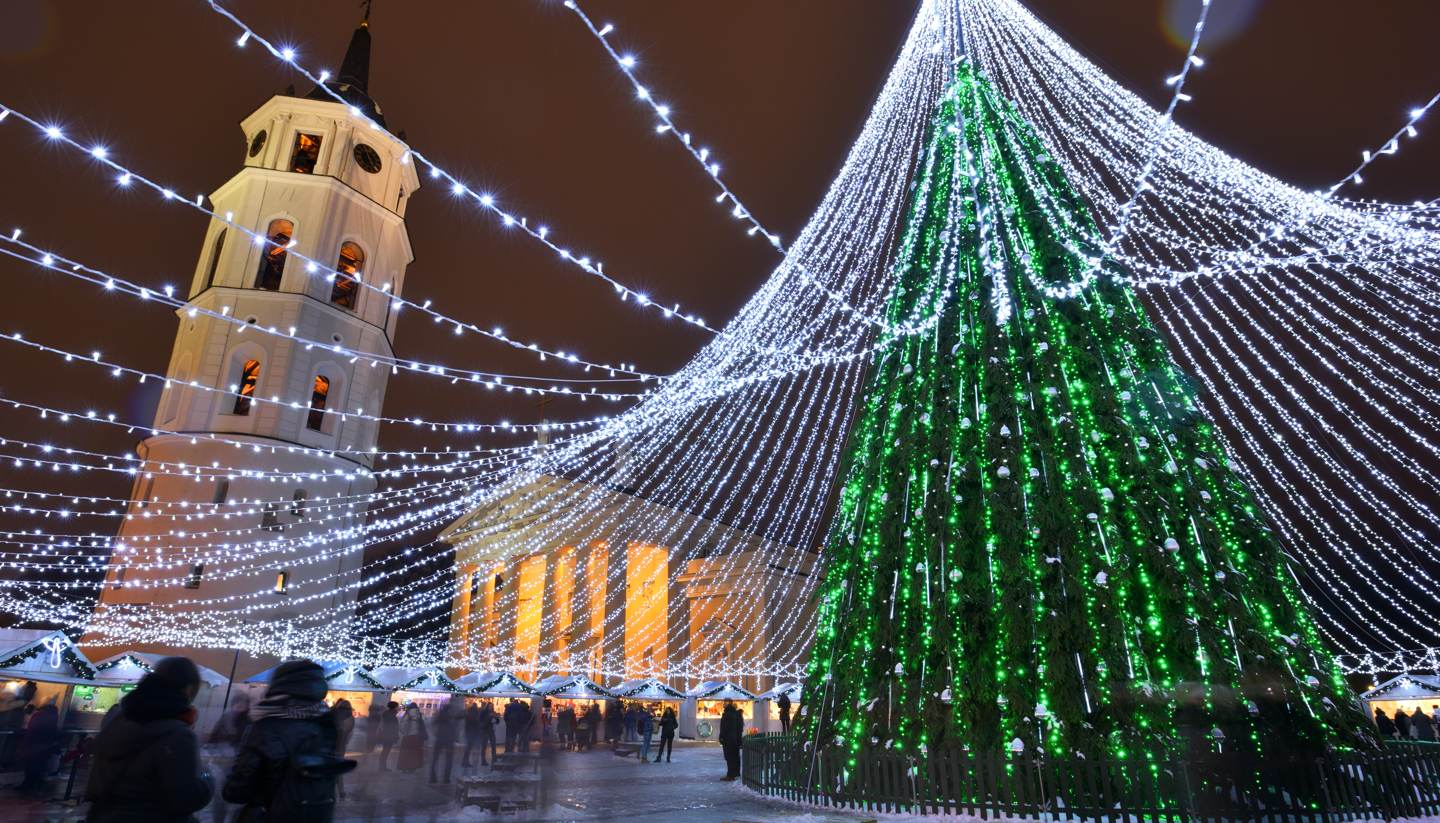Norway travel guide
About Norway
From precipitous glaciers to steep-sided gorges and crystalline fjords, Norway’s natural beauty is impossible to overstate. The unspoilt wilderness of the Arctic north is one of the few places where the sun shines at midnight during the summer and where the magnificent Northern Lights brighten the skies during the long winter nights.
Further to the south, the picturesque cities of Oslo, Trondheim and Bergen are brim-full of buildings showing off Scandinavia’s age-old flair for design in cosmopolitan surroundings. Oslo is the present-day capital and financial centre, while the country’s second city, Bergen, is a picturesque former Hanseatic trading port and gateway to the fjords of Norway. Stavanger is the focal point of the Norwegian oil industry and former capital, Trondheim, is a long-established centre of Christian pilgrimage, and more recently, technical research.
Though the weather can be a tad grim in Bergen, the UNESCO-listed waterfront adds a flash of colour with its wooden warehouses and shimmering harbour. Oslo’s waterfront is no less beautiful and has an ice-white Opera House that could give Sydney’s version a run for its money.
Stunning though the cities are, the real wonders of Norway are to be found outdoors. In the far north, the glacier-covered sub-polar peninsular of Svalbard is one of the few areas where polar bears can be seen in the wild and Norway’s miles of Arctic tundra double up as a destination for skiing and spotting the Northern Lights.
Elsewhere, a ferry trip along Geirangerfjord must rank among the world’s prettiest voyages with pine-topped cliffs giving way to icy green water, regularly topped up by the waterfalls that cascade down the fissured sides of the ravine. Indeed, you’d be hard pushed to find a part of Norway’s northern fjord area that isn’t strikingly beautiful, with snow-capped peaks and looming forests almost everywhere you look.
Key facts
385,186 sq km (148,721 sq miles).
5,271,958 (UN estimate 2016).
14.3 per sq km.
Oslo.
Constitutional monarchy.
King Harald V since 1991.
Prime Minister Jonas Gahr Støre since 2021.
Travel Advice
Before you travel
No travel can be guaranteed safe. Read all the advice in this guide. You may also find it helpful to:
- see general advice for women travellers
- read our guide on disability and travel abroad
- see general advice for LGBT+ travellers
- read about safety for solo and independent travel
- see advice on volunteering and adventure travel abroad
Travel insurance
If you choose to travel, research your destinations and get appropriate travel insurance. Insurance should cover your itinerary, planned activities and expenses in an emergency.
About FCDO travel advice
The Foreign, Commonwealth & Development Office (FCDO) provides advice about risks of travel to help you make informed decisions. Find out more about FCDO travel advice.
Get travel advice updates
Sign up to get email notifications when this travel advice is updated.
Follow FCDO:
This information is for people travelling on a full ‘British citizen’ passport from the UK. It is based on the UK government’s understanding of the current rules for the most common types of travel.
The authorities in Norway set and enforce entry rules. If you’re not sure how Norway’s entry requirements apply to you, contact the Norwegian Embassy in the UK.
Passport validity requirements
Norway follows Schengen area rules. Your passport must:
- have a ‘date of issue’ less than 10 years before the date you arrive – if you renewed your passport before 1 October 2018, it may have a date of issue that is more than 10 years ago
- have an ‘expiry date’ at least 3 months after the day you plan to leave the Schengen area (the expiry date does not need to be within 10 years of the date of issue)
Check with your travel provider that your passport and other travel documents meet requirements. Renew your passport if you need to.
You will be denied entry if you do not have a valid travel document or try to use a passport that has been reported lost or stolen.
Visa requirements
You can travel without a visa to the Schengen area, which includes Norway, for up to 90 days in any 180-day period. This applies if you travel:
- as a tourist
- to visit family or friends
- to attend business meetings, cultural or sports events
- for short-term studies or training
The requirements for working in Norway are different.
If you’re travelling to other Schengen countries as well, make sure your whole visit is within the 90-day limit. Visits to Schengen countries in the 180 days before you travel count towards your 90 days. If you overstay the 90-day visa-free limit, you may be banned from entering Schengen countries for up to 3 years.
Make sure you get your passport stamped on entry and exit.
If you’re a visitor, border guards will look at your entry and exit stamps to check you have not overstayed the 90-day visa-free limit for the Schengen area.
If your passport is missing a stamp, show evidence of when and where you entered or left the Schengen area (for example, boarding passes or tickets) and ask the border guards to add the date and location in your passport.
At Norwegian border control, you may also need to:
- show proof of your accommodation, for example, a hotel booking confirmation or proof of address for a second home
- show proof of your travel insurance
- show a return or onward ticket
- prove that you have enough money for your stay – the amount varies depending on your accommodation
Staying longer than 90 days in a 180-day period
To stay longer, you must meet the Norwegian government’s entry requirements. Check which type of visa or work permit you need with the Norwegian Embassy in the UK.
If you are in Norway with a residence permit or long-stay visa, this does not count towards your 90-day visa-free limit.
Read about passport stamping if you live in Norway.
New Schengen entry requirements
The EU’s Entry/Exit System (EES) is expected to start in October 2025. It is not currently in operation. The European Union will inform about the specific start date of the EES before its launch.
Read more information on the EU Entry/Exit System.
Svalbard
You’ll need your passport to travel to and enter the Svalbard archipelago.
Vaccine requirements
For details about medical entry requirements and recommended vaccinations, see TravelHealthPro’s Norway guide.
Customs rules
There are strict rules about goods you can take into or out of Norway. You must declare anything that may be prohibited or subject to tax or duty.
It is illegal to import whale meat from Norway into the UK. You could get a fine of up to £5,000 or a prison sentence.
Russian vehicle restrictions
There are restrictions on vehicles with Russian licence plates in Norway.
Taking food into Norway
You cannot take meat, milk or products containing them into EEA countries without special permission. There are some exceptions such as powdered baby milk, baby food and special foods or pet feed required for medical reasons.
Taking money into Norway
Declare cash or travellers cheques if the value is 25,000 Norwegian krone or more. If you do not declare it, you could get a substantial fine and temporary confiscation of the excess money, which may then be released only through a bank.
This guide also has safety advice for regions of Norway.
Terrorism
There is a high threat of terrorist attack globally affecting UK interests and British nationals, including from groups and individuals who view the UK and British nationals as targets. Stay aware of your surroundings at all times.
UK Counter Terrorism Policing has information and advice on staying safe abroad and what to do in the event of a terrorist attack. Find out how to reduce your risk from terrorism while abroad.
Terrorism in Norway
Terrorist attacks in Norway cannot be ruled out.
Political demonstrations
Demonstrations in Norway are usually peaceful. If you’re near areas where demonstrations are taking place, follow the advice of local authorities and move away if there are signs of disorder.
Crime
There’s a small risk of petty theft, particularly at airports and railway stations in and around Oslo.
Laws and cultural differences
Illegal drugs
Illegal drugs, including cannabis, carry severe penalties. You should expect a long jail sentence and heavy fines for possessing, using or smuggling illegal drugs, including when transiting through the airport.
Airports in Norway have excellent technology and security for detecting illegal items. This is also used to scan the baggage of transiting passengers.
Outdoor activities and adventure tourism
Get information about the risk of avalanches from the Norwegian Avalanche Warning Service or the European Avalanche Warning Services.
Police enforce bans on campfires in many hiking areas during the summer months.
Transport risks
Road travel
If you are planning to drive in Norway, see information on driving abroad and check the rules of the road in the RAC’s Norway guide. The guide lists driving regulations and other legal requirements you need to be aware of.
You can use a UK photocard driving licence to drive in Norway for up to 90 days. If you still have a paper driving licence, you may need to update it to a photocard licence or get the correct version of the international driving permit (IDP) as well.
Drink-driving is a serious offence in Norway. If you are tested and found to have a quarter of England’s legal limit of alcohol in your system you may get a fine and possible imprisonment. There are frequent roadside checks for alcohol.
You must use winter tyres with a minimum 3-millimetre (mm) tread if there is snow or ice covering the roads. You may also need to use studded tyres or snow chains. Truck drivers must use winter tyres with a minimum 5mm tread and have enough snow chains.
You can get the full tyre requirements from Norway’s State Highways.
Keep your headlights on, but dipped, during the daytime all year round in all places.
On roads that are not marked with a priority sign (yellow diamond), you must give way to traffic coming from the right.
If you commit a driving offence, you could get an on-the-spot fine of up to 10,000 Norwegian krone.
Arctic travel
Nearly half of Norway is in the Arctic Circle, including some very remote areas of land and sea. Emergency medical assistance and search and rescue are limited in these areas. See Arctic travel safety advice.
Extreme weather and natural disasters
Extreme weather, floods and landslides can happen. You should follow the advice of local authorities.
Find out what you can do to prepare for and respond to extreme weather and natural hazards.
Climate and temperature
The weather can change quickly, producing Arctic conditions even in summer on exposed mountain tops. Extreme weather can cause floods and landslides.
The winter is long and can last well into April. Temperatures can drop to -25°C and below. There is also a high wind chill factor, particularly in unsheltered areas and mountain ranges. Weather conditions can worsen quickly.
Wildfires
There is a risk of wildfires, especially during hot and dry periods. Police enforce bans on campfires in many areas.
This section has safety advice for regions of Norway. It only covers regions where the Foreign, Commonwealth & Development Office (FCDO) has specific advice.
You should also read FCDO’s overall travel advice and safety and security advice.
Svalbard
Follow the safety advice of the Governor of Svalbard, including on how to protect yourself from polar bear attacks, the risks of glaciers, avalanches and other dangers outside the main town of Longyearbyen.
Before you travel check that:
- your destination can provide the healthcare you may need
- you have appropriate travel insurance for local treatment or unexpected medical evacuation
This is particularly important if you have a health condition or are pregnant.
Emergency medical number
Dial 113 and ask for an ambulance.
Contact your insurance or medical assistance company quickly if you’re referred to a medical facility for treatment.
Vaccine recommendations and health risks
At least 8 weeks before your trip:
- check the latest information vaccine recommendations for Norway
- see where to get vaccines and whether you have to pay on the NHS travel vaccinations page
See what health risks you’ll face in Norway.
Medication
The legal status and regulation of some medicines prescribed or bought in the UK can be different in other countries.
Read best practice when travelling with medicines on TravelHealthPro.
Healthcare in Norway
If you’re a UK national, you can use your UK passport to get free state-provided medical treatment in hospitals. Some doctors may charge for their services elsewhere.
Access to free healthcare is not an alternative to travel insurance. Read more about what your travel insurance should cover.
FCDO has a list of medical providers in Norway where some staff will speak English.
Health insurance cards
To get medically necessary state healthcare in Norway, you can now also use the Global Health Insurance Card (GHIC) or European Health Insurance Card (EHIC).
The NHS’s getting healthcare abroad webpage has details about:
- how to apply for a GHIC
- how to get temporary cover if you lose your card or it does not arrive in time
- who qualifies for a new EHIC instead of a GHIC
- what treatment counts as medically necessary
A GHIC or EHIC is not an alternative to travel insurance. You may have costs your GHIC or EHIC does not cover, including:
- changes to travel and accommodation bookings
- additional standard costs for treatment
- medical repatriation to the UK
- treatment that is ruled non-urgent
- private healthcare
- private clinics
There is also guidance on healthcare if you’re living in Norway.
Travel and mental health
Read FCDO guidance on travel and mental health. There is also mental health guidance on TravelHealthPro.
The Foreign, Commonwealth & Development Office (FCDO) cannot provide tailored advice for individual trips. Read this travel advice and carry out your own research before deciding whether to travel.
Emergency services in Norway
Fire: 110
Police: 112
Ambulance: 113
Contact your travel provider and insurer
Contact your travel provider and your insurer if you are involved in a serious incident or emergency abroad. They will tell you if they can help and what you need to do.
Refunds and changes to travel
For refunds or changes to travel, contact your travel provider. You may also be able to make a claim through insurance. However, insurers usually require you to talk to your travel provider first.
Find out more about changing or cancelling travel plans, including:
- where to get advice if you are in a dispute with a provider
- how to access previous versions of travel advice to support a claim
Support from FCDO
FCDO has guidance on staying safe and what to do if you need help or support abroad, including:
- finding English-speaking lawyers, funeral directors and translators and interpreters in Norway
- dealing with a death in Norway
- being arrested in Norway
- getting help if you’re a victim of crime
- what to do if you’re in hospital
- if you’re affected by a crisis, such as a terrorist attack
Contacting FCDO
Help abroad
See how to get help from the UK government abroad including in an emergency.
Help in the UK
You can call FCDO in London if you need urgent help because something has happened to a friend or relative abroad.
Telephone: 020 7008 5000 (24 hours)
Get travel advice updates
Sign up to get email notifications when this travel advice is updated.
Follow FCDO:
Risk information for British companies
The Overseas Business Risk service offers information and advice for British companies operating in Norway on how to manage political, economic, and business security-related risks.
